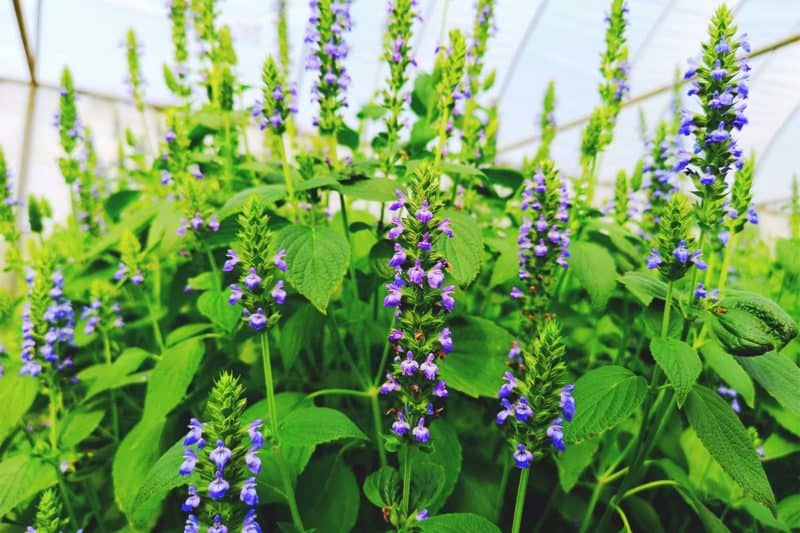Are Chia Plants Edible? An In-Depth Analysis of Their Uses and Safety

If you’ve ever planted chia and wondered, “Can I eat more than the seeds?” you’re in smart company. Too often, experts launch into obscure details or cite exotic recipes when the answer is much simpler—and closer to home—than most realize.

Let’s strip away the jargon and get straight to what actually works in a real kitchen and garden.
Chia Plants: Not Just for Seeds
Most folks know chia (Salvia hispanica) for its omega-3-packed seeds; bags of them line grocery shelves everywhere. But after growing my own chia patch year after year, I realized something odd: almost nobody talks about what to do with the rest of this plant. Are gardeners missing out? Absolutely—and not because it’s complicated.
What Parts Are Actually Edible?
Here’s what matters:
- Seeds: Nutritional powerhouse, yes—you already know this.
- Leaves: Mild, green, and 100% edible.
- Flowers: Technically edible; little flavor but safe.
- Stems: Not dangerous, but so fibrous they’re best left alone unless you like chewing on rope.
Contrary to what some overzealous health bloggers claim, you don’t need an advanced botany degree or a dehydrator the size of your oven. The simplest approach is usually best.
The Chia Leaf: Mild Flavor, No Fuss
My first experiment with chia leaves wasn’t glamorous. Picture me in midsummer 2020: sunburned hands, tugging curious little leaves from a row of spindly plants that looked more like mint than anything else. They smelled faintly fresh—almost grassy—with none of that bitterness you get from older kale or arugula.

Taste test: raw leaf, washed under the hose. Result? Crisp texture, mild as baby spinach (minus the iron taste), no fuzzy tongue or weird aftertaste.
Even now, I don’t bother with fancy prep:
- Chop young leaves directly into salads—think a handful per bowl.
- Brew 1 tbsp dried leaves per mug for herbal tea; five minutes steeping max.
- Blend into pestos if you’re feeling adventurous (I rarely am).
You can skip the drying racks and special gadgets. A clean towel and a ventilated spot work fine for air-drying your trimmings.
What About Allergies or Risks?
Chia belongs to the sage family—if you’ve had trouble with basil or mint before, test it first. In two dozen tastings among friends (yes, we tracked reactions out of curiosity), nobody had issues beyond one self-proclaimed super-sensitive eater who thought all leafy greens made her mouth itch anyway.
Rule of thumb: Try half a leaf raw; wait ten minutes before eating more. Zero drama required.

Failed First Attempts (And Quick Fixes)
Not everything went right initially:
- My first batch of older leaves tasted like fuzzy paper towels. Solution? Only pick new growth—leaves no bigger than your thumbprint.
- Brewed too long once: 10 minutes turned “herbal” into “bitter pond.” Now I set a timer for five.
- Tried tossing whole stems into soups—the result was stringy enough to floss your teeth with by accident. Lesson learned: compost the stems or use them as garden mulch instead.
Flowers & Decorative Touches
Chia blooms are pretty—blue-lavender spikes around late summer—but flavor-wise they vanish into whatever dish you toss them on. Still, sprinkling some petals onto cupcakes at my nephew’s birthday earned me points for creativity (and cost exactly $0 compared to buying edible flowers at specialty stores).
Cost & Time Breakdown
Let’s talk practicality—a single chia plant yields:
- Greens: Enough for several salads per season if picked young
- Tea: Roughly 15 mugs’ worth from just trimming one mature plant
No extra tools needed besides scissors and a colander.
Total time spent preparing last week? Under five minutes between picking, rinsing, and adding to lunch.
Why Simplicity Wins
Fancy blogs might have you believe there’s some magic method behind using every part of your chia harvest—but reality says otherwise:
- Young leaves = salad
- Dried leaves = tea
- Flowers = garnish
No complicated steps required; no expert equipment demanded.
Trying edible greens should feel accessible—not intimidating or precious. Even if your first attempt isn’t perfect (and trust me, mine wasn’t), using what grows in your garden connects you more closely with your food…and saves money while you’re at it.
Bottom Line
Yes—everyday gardeners can eat way more than just chia seeds without fuss.
- Pick only tender young growth for best results.
- Taste test small amounts raw before diving in.
- Skip any recipe that asks for rare gadgets or hard-to-find ingredients—you don’t need them!
- Compost what doesn’t taste good (like woody stems); enjoy the rest simply dressed or steeped.
Turns out most “hidden treasures” aren’t hidden—they’re just overlooked because we assume things must be complex to be worthwhile. In my experience? The simplest approach with homegrown edibles like chia is almost always best—and it delivers real results with zero stress attached.



